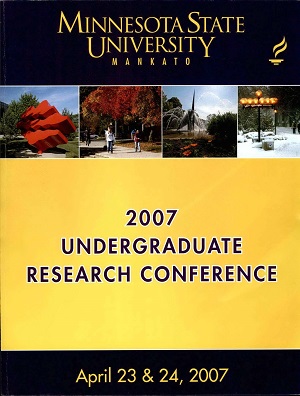Automated Visual Inspection for Discriminating Between Heraldic Devices and Text
Location
CSU 202
Start Date
23-4-2007 3:00 PM
End Date
23-4-2007 5:00 PM
Student's Major
Computer Information Science
Student's College
Science, Engineering and Technology
Mentor's Name
Rebecca Bates
Mentor's Department
Computer Information Science
Mentor's College
Science, Engineering and Technology
Description
Members of the Society for Creative Anachronism (SCA) distinguish themselves through heraldic devices, similar to those used in the middle ages. Members submit a drawing of their heraldic artwork, such as that found on coats of arms and family crests, which is then compared to all previously submitted drawings before approval. Because these devices need to be distinct from all previous ones, it would be useful to have an online catalog for members to refer to in preparing their devices. When creating the catalog, it is important to select only the device from a scanned form because the application forms contain personal information that should not be placed on the web. In order to meet this need, we have developed a system for selecting the picture of the device from a scanned image of the application form. We will present a comparison between an edge-detection-based approach and an approach based on optical character recognition (OCR). The edge detection approach finds the edges of the device and selects only the portions of the image within a large, connected edge. The OCR approach selects the largest single "character" in the file, which would be an unrecognized character that contains the image. Comparisons of program size, cost, and extraneous pixels included or excluded will be presented.
Automated Visual Inspection for Discriminating Between Heraldic Devices and Text
CSU 202
Members of the Society for Creative Anachronism (SCA) distinguish themselves through heraldic devices, similar to those used in the middle ages. Members submit a drawing of their heraldic artwork, such as that found on coats of arms and family crests, which is then compared to all previously submitted drawings before approval. Because these devices need to be distinct from all previous ones, it would be useful to have an online catalog for members to refer to in preparing their devices. When creating the catalog, it is important to select only the device from a scanned form because the application forms contain personal information that should not be placed on the web. In order to meet this need, we have developed a system for selecting the picture of the device from a scanned image of the application form. We will present a comparison between an edge-detection-based approach and an approach based on optical character recognition (OCR). The edge detection approach finds the edges of the device and selects only the portions of the image within a large, connected edge. The OCR approach selects the largest single "character" in the file, which would be an unrecognized character that contains the image. Comparisons of program size, cost, and extraneous pixels included or excluded will be presented.
Recommended Citation
Marte, Ivan A.. "Automated Visual Inspection for Discriminating Between Heraldic Devices and Text." Undergraduate Research Symposium, Mankato, MN, April 23, 2007.
https://cornerstone.lib.mnsu.edu/urs/2007/oral-session-08/6



